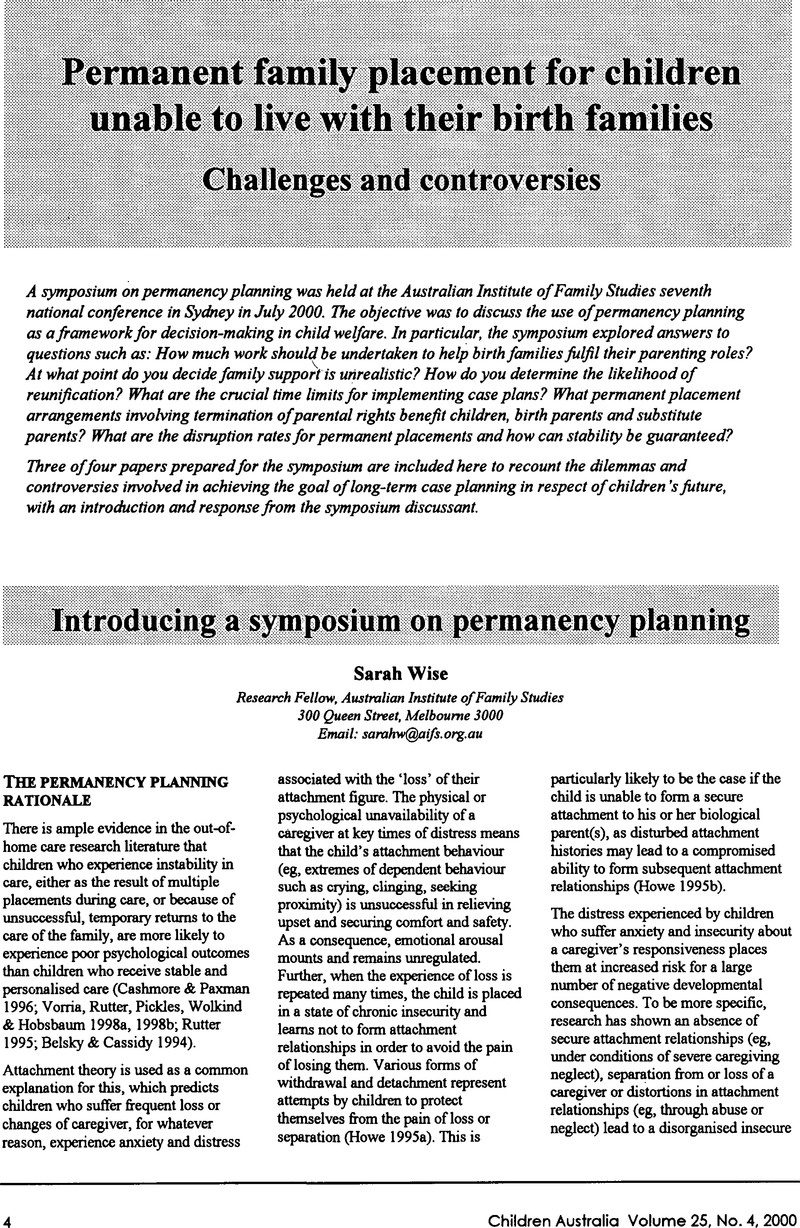Crossref Citations
This article has been cited by the following publications. This list is generated based on data provided by Crossref.
Brunner, Claire
and
O'Neill, Cas
2009.
Mirror families: Creating extended families for life.
Children Australia,
Vol. 34,
Issue. 4,
p.
6.
Osmond, Jennifer
and
Tilbury, Clare
2012.
Permanency Planning Concepts.
Children Australia,
Vol. 37,
Issue. 3,
p.
100.



